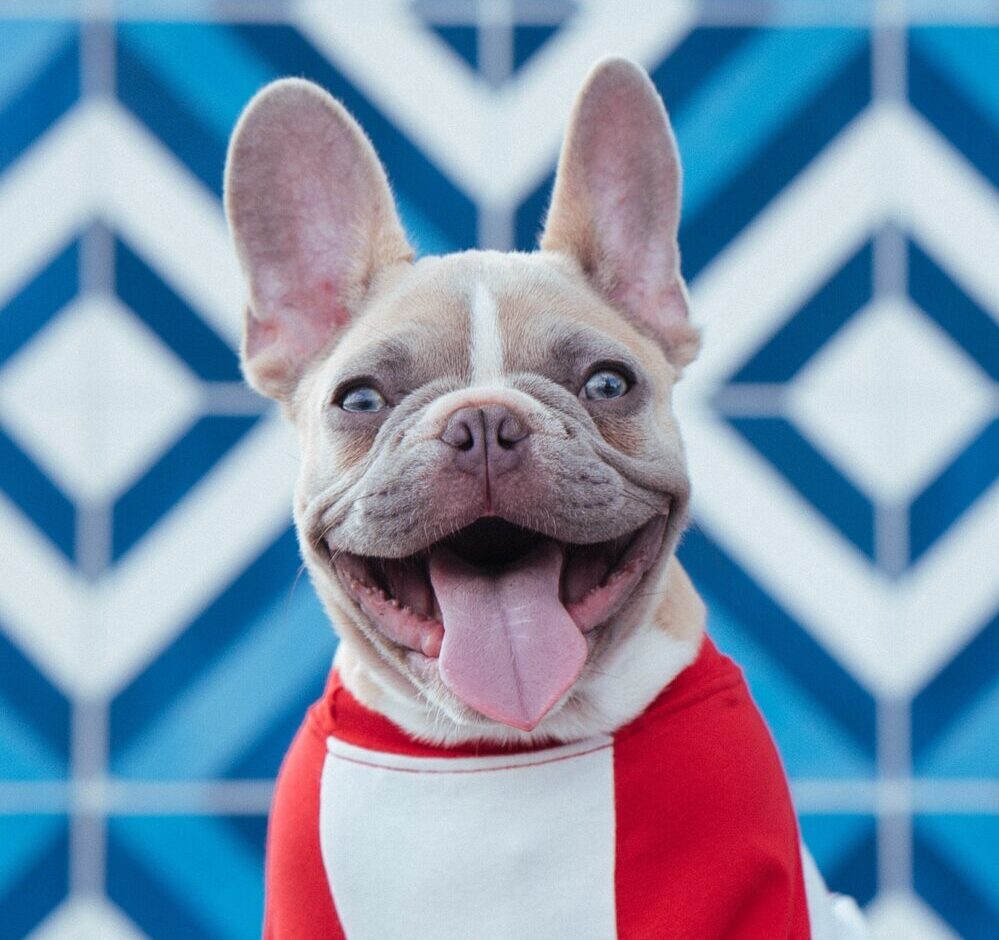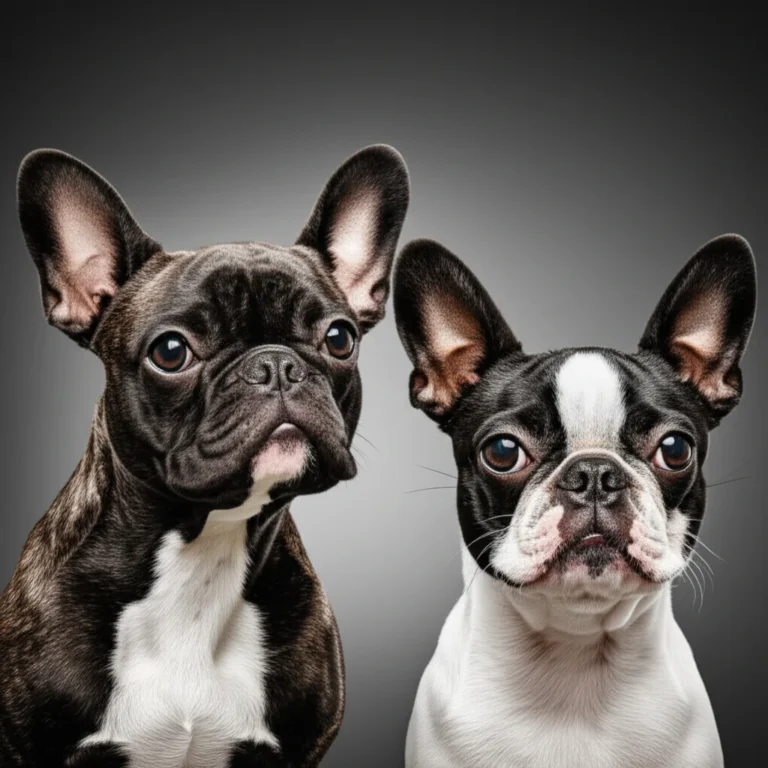Support our educational content for free when you purchase through links on our site. Learn more
What Is a Whippet Puppy? 15 Must-Know Facts 🐾 (2025)
If you’ve ever caught a glimpse of a Whippet puppy, you know they’re a captivating blend of elegance, speed, and heart-melting charm. But what exactly is a Whippet puppy beyond their sleek silhouette? Is this the perfect furry companion for your home, or a high-speed handful you’ll need to keep on a tight leash? Stick with us as we unravel the mysteries of this “miniature greyhound,” from their lightning-fast zoomies to their surprisingly gentle nature.
Did you know Whippets can accelerate faster than any other dog breed, reaching speeds up to 35 mph in just seconds? Yet, indoors, they’re often the calmest couch potatoes you’ll ever meet. Curious about their unique personality, care needs, or how to find a reputable breeder? We’ve got you covered with 15 essential insights that will help you decide if a Whippet puppy is your next best friend.
Key Takeaways
- Whippet puppies are affectionate, gentle, and surprisingly calm indoors but love to sprint outdoors at incredible speeds.
- They require moderate exercise, a warm environment, and positive, patient training to thrive.
- Their short coat means low grooming needs but high sensitivity to cold—coats and comfy beds are a must!
- Strong prey drive means they must be exercised in securely fenced areas or on leash.
- Finding a reputable breeder or considering adoption through Whippet rescues ensures a healthy, happy puppy.
Ready to prepare your home? Check out our favorite cozy beds, durable toys, and stylish coats to keep your Whippet puppy comfy and happy:
- Snoozer Dog Beds: Amazon | Chewy
- Ruffwear Dog Coats: Amazon | Ruffwear Official Website
- KONG Puppy Toys: Amazon | KONG Official Website
Table of Contents
- ⚡️ Quick Tips and Facts About Whippet Puppies
- 🐾 The Whippet’s Winding Road: A Glimpse into Their History & Origins
- 💖 Unveiling the Whippet’s Wonderful World: Temperament & Traits of the Miniature Greyhound
- 🏡 Bringing Home a Whippet Puppy: What to Expect & How to Prepare
- 🧠 Smart & Sensitive: Training Your Whippet Puppy
- 🩺 Whippet Wellness: Common Health Concerns & Preventative Care
- 🏙️ Living with a Whippet: Are They the Right Fit for Your Lifestyle?
- 💰 The Cost of Cuddles: Understanding Whippet Ownership Expenses
- 🔍 Your Quest for a Whippet Puppy: Tips for Finding a Reputable Breeder
- 🐾 Finding Your Fur-ever Friend: Whippet Rescues & Adoption
- 🤔 Whippet Wonders: Fun Facts & Surprises About This Elegant Breed
- 🏁 Conclusion: Is a Whippet Puppy Your Perfect Companion?
- 🔗 Recommended Links
- ❓ FAQ: Your Whippet Puppy Questions Answered
- 📚 Reference Links
Here at Snubby Puppy™, we may specialize in the adorable smooshed-face breeds, but our love for dogs knows no bounds! And let us tell you, the Whippet has sprinted its way right into our hearts. So, you’re thinking about bringing one of these elegant, lightning-fast pups into your life? You’ve come to the right place. We’re about to spill all the tea on what it’s really like to own a Whippet puppy.
Let’s dive in!
⚡️ Quick Tips and Facts About Whippet Puppies
Pressed for time? We get it. Here’s the lowdown on Whippet puppies in a nutshell. Think of this as your cheat sheet to this incredible breed.
| Trait | The Skinny on Whippets |
|---|---|
| Temperament | Gentle, affectionate, calm indoors, but with explosive bursts of energy outdoors. |
| Size | Medium-sized; typically 25-40 pounds and 18-22 inches tall. |
| Lifespan | A healthy 12-15 years on average. |
| Exercise Needs | Moderate. They need daily walks and, crucially, a safe, fenced area to sprint! 💨 |
| Grooming | Super low-maintenance! Their short, smooth coat needs minimal brushing. |
| Trainability | Intelligent and eager to please, but can have a stubborn “what’s in it for me?” streak. |
| Good with Kids? | ✅ Generally yes! Their gentle nature makes them great family pets. |
| Good with Pets? | ✅ Good with other dogs. ❌ Use caution with cats and small pets due to a strong prey drive. |
| Apartment Living? | ✅ Surprisingly, yes! They are quiet “house dogs” as long as they get their daily exercise. |
| Barking Level | Low. They’re not big on barking, making them poor watchdogs but great neighbors! |
🐾 The Whippet’s Winding Road: A Glimpse into Their History & Origins
Ever wonder how this sleek, speedy marvel came to be? The Whippet’s story is a fascinating one! While images of similar-looking sighthounds date back to antiquity, the breed as we know it today emerged in Victorian England during the 1800s.
They were developed by working-class coal miners in Northern England who needed a fast dog for rabbit hunting and racing. They couldn’t afford to keep large Greyhounds, so they created a smaller, equally swift version, likely by crossing Greyhounds, Italian Greyhounds, and various terriers. This earned them the nickname “the poor man’s racehorse.”
These dogs were cherished not just for their utility but also for their companionship, a trait that shines through brightly in the modern Whippet. They were officially recognized by The Kennel Club in the UK in 1891 and the American Kennel Club (AKC) just a few years earlier in 1888. Today, they’re celebrated as versatile companions, excelling in everything from dog shows to just being world-class cuddle buddies on the couch.
💖 Unveiling the Whippet’s Wonderful World: Temperament & Traits of the Miniature Greyhound
So, what are they really like to live with? Imagine a world-class athlete who also happens to be a professional couch potato. That’s a Whippet. They have a fascinating dual nature: serene and dignified indoors, but an explosive, joyful blur of motion outdoors.
They are incredibly affectionate and gentle, forming tight bonds with their families. A Whippet’s favorite place is often curled up right next to you (or on you!). They are sensitive souls who thrive on positive reinforcement and a calm home environment. Harsh training methods will get you nowhere with this breed.
One key trait you absolutely must understand is their high prey drive. This is not a learned behavior; it’s deeply ingrained. They were bred to spot and chase small, furry things. This means they can never be trusted off-leash in an unfenced area. A squirrel, a stray cat, or even a plastic bag blowing in the wind can trigger their chase instinct, and they can reach speeds of up to 35 mph in seconds.
To see these graceful hounds in action and learn more about their personality, the video “WHIPPET Dog Breed 🐶 | Characteristics, Care and Health 🐾” we’ve featured above is a fantastic resource. (Link: #featured-video)
The Whippet Blueprint: Understanding the Breed Standard
The Whippet’s look is one of athletic elegance. They are the epitome of “form follows function,” with every curve and line built for speed and agility. Here’s a quick breakdown of their key physical traits according to the AKC Breed Standard.
| Feature | Description |
|---|---|
| Height | Males: 19-22 inches; Females: 18-21 inches at the shoulder. |
| Weight | Typically between 25 and 40 pounds. |
| Body Shape | Deep chest, tucked abdomen, arched back, and long, muscular legs. An aerodynamic build. |
| Head | Long and lean with a fine muzzle and rose ears. |
| Coat | Short, fine, and smooth. Feels like velvet! |
| Gait | Effortless, low, and free-moving. A beautiful sight to behold when they run. |
A Rainbow of Whippets: Exploring Coat Colors & Markings
One of the fun things about Whippets is the sheer variety of their coat colors! According to the breed standard, any color is acceptable. You’ll find them in a stunning array of shades and patterns, including:
- Solid colors: Black, blue (a gorgeous grey), fawn, red, and white.
- Brindle: A beautiful “tiger-stripe” pattern.
- Parti-colors: A white base with patches of any other color.
No two Whippets are exactly alike, and their beautiful coats are just one part of their unique charm.
🏡 Bringing Home a Whippet Puppy: What to Expect & How to Prepare
Congratulations! You’ve decided to bring a Whippet puppy home. Get ready for a whirlwind of needle-sharp teeth, hilarious zoomies, and heart-melting cuddles. But are you truly prepared? Let’s get your home Whippet-ready.
Setting Up Your Whippet Puppy’s Haven: Essential Supplies
Whippets are creatures of comfort. They have thin skin and very little body fat, so they feel the cold more than other breeds. Soft bedding and warm coats are not just accessories; they’re necessities!
Here’s a checklist of must-haves:
- ✅ A Soft, Cushioned Bed: Think plush, orthopedic, and cozy. They love to burrow, so a cave-style bed like those from Snoozer can be a huge hit.
- 👉 Shop Snoozer Beds on: Amazon | Chewy | Snoozer Official Website
- ✅ A Warm Coat or Sweater: This is non-negotiable for cold weather. Brands like Ruffwear and Hurtta make fantastic, durable coats designed for active dogs.
- ✅ A Martingale Collar: Standard collars can slip right off a sighthound’s slender head. A Martingale collar tightens gently when they pull, preventing escapes without choking. 2 Hounds Design offers beautiful and reliable options.
- ✅ High-Quality Puppy Food: More on this below!
- ✅ Durable Chew Toys: Puppy teeth are no joke! Get a variety of textures. KONG classics and West Paw toys are great for tough chewers.
Nutrition for Your Growing Whippet: Fueling Their Zoomies!
What you feed your Whippet puppy will build the foundation for a long, healthy life. They need a high-quality diet appropriate for their age and energy level. Look for foods with real meat as the first ingredient.
Some brands we trust for active, lean breeds like Whippets include:
- Orijen Puppy Formula
- Acana Puppy & Junior
- The Farmer’s Dog (a fresh food subscription service)
Pro Tip: Whippets can have sensitive stomachs. When you bring your puppy home, stick with the food the breeder was using for at least a few weeks before slowly transitioning to a new food to avoid tummy upset. Always consult your vet for personalized nutrition advice.
Zoom! Exercise Needs of a Whippet Puppy
This is where the Whippet’s dual nature comes into play. They are often called “45-mph couch potatoes” for a reason. They need a good, hard run every day, but once they’ve burned off that energy, they are content to snooze for hours.
- Puppies: Keep exercise sessions short and sweet to protect their growing joints. Several short play sessions per day are better than one long, strenuous run.
- Adults: A daily walk on a leash combined with 15-20 minutes of off-leash sprinting in a securely fenced area is ideal. Dog parks can be great, but be mindful of their speed and gentle nature around rougher-playing dogs.
- Mental Stimulation: Don’t forget their brains! Food puzzles and training games are great ways to keep them mentally tired and happy.
Grooming Your Sleek Sighthound: Keeping Them Spick and Span
If you hate grooming, you’ll love a Whippet. Their short, smooth coat is the definition of “wash and wear.”
- Brushing: A quick once-over with a rubber curry brush or grooming mitt once a week is plenty to remove loose hair and keep their coat shiny.
- Bathing: Only bathe them when they’re truly dirty. Over-bathing can dry out their skin.
- Nail Trims: This is important! Long nails can affect their gait. Trim them every few weeks.
- Dental Care: Regular teeth brushing is essential for preventing dental disease.
Because their coat is so thin, they are prone to nicks and scrapes. It’s a good habit to give them a quick check-over after a hard play session outdoors.
🧠 Smart & Sensitive: Training Your Whippet Puppy
Training a Whippet is a unique experience. They are smart and can learn quickly, but they are also sensitive and have an independent streak. The key to success is to make training a fun and rewarding game. Our experts in Behavior Analysis agree that positive reinforcement is the only way to go.
- ✅ DO: Use treats, praise, and toys. Keep sessions short and upbeat. Be patient and consistent.
- ❌ DON’T: Use harsh corrections, yelling, or punishment. This will cause a sensitive Whippet to shut down.
They can be mischievous and are known for “counter-surfing,” so keeping your kitchen counters clear is a must!
Social Butterflies: The Importance of Early Socialization
Whippets can be naturally reserved or shy. Early and ongoing socialization is critical to help them grow into confident, well-adjusted adults. From a young age, expose your puppy safely to a wide variety of:
- People (different ages, appearances)
- Sounds (vacuum cleaner, traffic)
- Places (pet-friendly stores, different neighborhoods)
- Other dogs (in a controlled, safe environment like a puppy class)
A well-socialized Whippet is a joy, but an under-socialized one can be fearful and anxious.
House Training & Crate Training: Making Potty Time a Breeze
Whippets are generally clean dogs and can be easy to house-train with consistency.
- Frequent Potty Breaks: Take your puppy out first thing in the morning, last thing at night, and after every nap, meal, and play session.
- Crate Training: A crate can be an invaluable tool. It provides them with a safe, den-like space and prevents accidents when you can’t supervise them. Make the crate a happy place with comfy bedding and special toys.
🩺 Whippet Wellness: Common Health Concerns & Preventative Care
Whippets are a generally healthy and robust breed, often free from many of the hereditary issues that plague other purebreds. A 2024 UK study found their average lifespan to be an impressive 13.4 years! However, like all breeds, there are some health conditions to be aware of.
- Anesthesia Sensitivity: This is a big one. Due to their low body fat, Whippets and other sighthounds are sensitive to barbiturate anesthetics. ALWAYS ensure your veterinarian is experienced with sighthounds before any procedure requiring anesthesia.
- Heart Conditions: Some Whippets can develop heart murmurs or Mitral Valve Disease (MVD), particularly in their senior years. Regular vet check-ups are key for early detection.
- Eye Issues: Genetic eye defects like Progressive Retinal Atrophy (PRA) are rare but can occur.
- Hypothyroidism: A condition where the thyroid doesn’t produce enough hormones, which is treatable with medication.
- Cuts and Scrapes: Their thin skin and love for running mean minor injuries are common. It’s wise to have a canine first-aid kit on hand.
Preventative care, including annual vet visits, vaccinations, and parasite control, is the best way to keep your Whippet healthy and happy for years to come.
🏙️ Living with a Whippet: Are They the Right Fit for Your Lifestyle?
So, you know the facts, but is a Whippet really the right dog for you? Let’s break it down.
A Whippet might be your perfect match if:
- ✅ You want an affectionate, cuddly companion who will be your shadow.
- ✅ You appreciate a quiet dog that doesn’t bark much.
- ✅ You have a securely fenced yard or are committed to daily leash walks and trips to a safe running area.
- ✅ You prefer a low-maintenance grooming routine.
- ✅ You live in an apartment or a house—they’re adaptable as long as their exercise needs are met!
You might want to reconsider if:
- ❌ You’re looking for a tough, intimidating watchdog. (They’re more likely to greet an intruder with a tail wag!)
- ❌ You don’t have access to a securely fenced area for them to run.
- ❌ You have cats or other small pets and aren’t prepared for careful management of their prey drive.
- ❌ You live in a very cold climate and aren’t prepared to invest in a canine wardrobe.
- ❌ You want a dog that can be trusted off-leash on hikes or in open spaces.
Whippet vs. Other Breeds: Is a Whippet Right for You?
How do they stack up against their sighthound cousins?
- Whippet vs. Greyhound: Think of a Whippet as a “fun-size” Greyhound. They share the same gentle, couch-potato personality but in a smaller, more manageable package. Greyhounds are larger and can be a bit more reserved.
- Whippet vs. Italian Greyhound: Italian Greyhounds (IGs) are much smaller and more fragile. While Whippets are robust, IGs are prone to leg breaks, especially as puppies. IGs also tend to be more high-strung and yappy than the more laid-back Whippet.
💰 The Cost of Cuddles: Understanding Whippet Ownership Expenses
While we don’t list specific prices, it’s important to budget for a new puppy. The initial cost of a well-bred Whippet puppy from a reputable breeder is just the beginning.
Be prepared for ongoing expenses, including:
- High-Quality Food: Fueling a canine athlete isn’t cheap!
- Veterinary Care: Annual check-ups, vaccinations, parasite prevention, and emergency funds.
- Gear: Coats, beds, collars, leashes, toys, and crates.
- Training: Puppy classes are highly recommended for socialization and basic obedience.
- Grooming: Nail trims and other supplies.
Owning a dog is a significant financial commitment, so it’s crucial to be prepared before you bring your puppy home.
🔍 Your Quest for a Whippet Puppy: Tips for Finding a Reputable Breeder
Finding a responsible breeder is the most important step in your journey. A good breeder is dedicated to the health, temperament, and betterment of the breed.
A reputable breeder will:
- ✅ Perform health screenings on their breeding dogs for genetic conditions.
- ✅ Raise puppies in their home, not in a kennel.
- ✅ Ask you lots of questions to ensure you’re a good fit for one of their puppies.
- ✅ Be a resource for you for the entire life of the dog.
- ✅ Be transparent and allow you to meet the puppy’s parents (or at least the mother).
Red flags to watch out for:
- ❌ Breeding multiple different types of dogs.
- ❌ Not allowing you to see where the puppies are raised.
- ❌ Selling puppies to the first person with cash, with no questions asked.
- ❌ Not providing health records or a health guarantee.
A great place to start your search is the American Whippet Club’s breeder referral list.
🐾 Finding Your Fur-ever Friend: Whippet Rescues & Adoption
Don’t forget about adoption! There are wonderful Whippets and Whippet mixes in rescues waiting for a loving home. Adopting an adult dog can be a fantastic option, as their personality is already formed, and many are already house-trained.
Check out organizations like the Whippet Rescue and Placement (WRAP) to see available dogs in your area.
🤔 Whippet Wonders: Fun Facts & Surprises About This Elegant Breed
Think you know everything about Whippets now? Here are a few more tidbits to impress your friends at the dog park!
- Fastest Acceleration: While Greyhounds have a higher top speed over long distances, Whippets have the fastest acceleration of any dog breed!
- The “Whippet Twitch”: Many Whippets will “smile” or chatter their teeth when they are excited or happy. It’s an endearing and quirky trait!
- Show Ring Stars: A Whippet has won the coveted Best in Show at the prestigious Crufts dog show four times.
- Bully Whippets: A rare genetic mutation can result in a “double-muscled” Whippet, often called a “Bully Whippet.” They are incredibly muscular but are not known to have any significant health problems related to the mutation.
🏁 Conclusion: Is a Whippet Puppy Your Perfect Companion?
After sprinting through the ins and outs of Whippet puppies, what’s the verdict? Are these sleek, speedy, and sensitive pups the right fit for your life? If you crave a gentle, affectionate companion who can transform from a calm lapdog to a lightning-fast sprinter in seconds, then a Whippet puppy might just be your perfect match. Their low-maintenance grooming, quiet demeanor, and loving nature make them wonderful family pets—as long as you’re ready to meet their exercise needs and manage their strong prey drive.
We’ve shared the importance of early socialization, positive training, and a warm, comfy home to keep your Whippet thriving. Remember, their thin coats mean they need protection from the cold, and their sensitive nature demands patience and kindness during training.
If you’re wondering about the “snub nose” factor, Whippets don’t have the smooshed faces that Snubby Puppy™ usually champions. But their elegance and personality more than make up for it! They’re a unique blend of athlete and cuddlebug, and once you experience their joyful zoomies and gentle snuggles, you’ll understand why so many fall head over heels for them.
So, whether you’re a seasoned dog owner or a first-time puppy parent, a Whippet puppy offers a rewarding journey filled with love, laughter, and a few speedy surprises. Ready to welcome one into your heart and home? We say go for it—with all the knowledge and preparation you need to make it a success!
🔗 Recommended Links
Ready to gear up for your Whippet puppy adventure? Here are some top picks for supplies and resources we trust:
- Snoozer Dog Beds: Amazon | Chewy | Snoozer Official Website
- Ruffwear Dog Coats: Amazon | Chewy | Ruffwear Official Website
- Hurtta Dog Coats: Amazon | Chewy | Hurtta Official Website
- 2 Hounds Design Martingale Collars: Amazon | 2 Hounds Design Official Website
- KONG Puppy Toys: Amazon | Chewy | KONG Official Website
- West Paw Durable Toys: Amazon | West Paw Official Website
- Orijen Puppy Food: Amazon | Orijen Official Website
- Acana Puppy Food: Amazon | Acana Official Website
- The Farmer’s Dog Fresh Food: The Farmer’s Dog Official Website
Books to deepen your Whippet knowledge:
- The Whippet by Joan Hustace Walker — A comprehensive breed guide.
- Whippets by Susan E. Bray — Covers history, care, and training.
- The Complete Guide to Whippets by Juliette Cunliffe — Expert advice for owners.
❓ FAQ: Your Whippet Puppy Questions Answered
What are the characteristics of a whippet puppy?
Whippet puppies are gentle, affectionate, and energetic. They have a sleek, athletic build with a short, smooth coat that comes in many colors. They are calm indoors but love to sprint outdoors with bursts of incredible speed. Their sensitive nature means they respond best to positive, gentle training methods.
How do whippet puppies compare to snub nose dogs?
Unlike the smooshed-faced breeds we adore at Snubby Puppy™, Whippets have long, narrow muzzles and a streamlined head shape. They don’t have the breathing issues common in brachycephalic breeds but do share a sensitivity to cold due to their thin coats. Whippets are built for speed and grace, not for the characteristic snub nose look.
Are whippet puppies good family pets?
✅ Absolutely! Whippets are known for their gentle and affectionate nature, making them excellent companions for families. They generally get along well with children and other dogs. However, their strong prey drive means supervision around small pets is essential.
What is the temperament of a whippet puppy?
Whippet puppies are calm, loving, and playful. They bond closely with their families and enjoy cuddling. They can be shy or reserved with strangers but warm up quickly with proper socialization. Their intelligence and sensitivity mean they thrive with patient, reward-based training.
How do you care for a whippet puppy?
Caring for a Whippet puppy involves:
- Providing daily exercise, including safe off-leash running.
- Feeding a high-quality, balanced diet tailored to their growth.
- Offering warm bedding and clothing to protect against cold.
- Maintaining regular grooming with minimal brushing and nail trims.
- Ensuring early socialization and gentle training.
- Scheduling routine vet check-ups and preventative care.
Read more about “Snubby Puppy: 10 Irresistible Reasons to Love These Adorable Pups! 🐾 …”
Do whippet puppies have snub noses?
❌ No. Whippets have long, slender muzzles typical of sighthounds. They are the antithesis of snub-nosed breeds, designed for speed and aerodynamic efficiency.
What health issues are common in whippet puppies?
Whippets are generally healthy but watch for:
- Anesthesia sensitivity due to low body fat.
- Heart murmurs and Mitral Valve Disease in older dogs.
- Rare genetic eye conditions like PRA.
- Hypothyroidism.
- Minor cuts and scrapes due to thin skin.
- Prey drive-related injuries if not supervised.
Regular veterinary care and a safe environment help mitigate these risks.
How can I safely exercise a whippet puppy given their prey drive?
Because Whippets have a strong instinct to chase, always exercise them in securely fenced areas or on a leash. Early training to recall commands and supervised playtime help keep them safe. Avoid off-leash activities in unfenced or unsecured areas to prevent dangerous pursuits.
Are whippet puppies suitable for apartment living?
✅ Yes! Whippets are surprisingly adaptable to apartment life as long as they receive daily exercise and mental stimulation. Their quiet nature and low barking make them excellent neighbors. Just be sure to provide opportunities for safe running and play.
📚 Reference Links
For more detailed information and verification, check out these reputable sources:
- American Kennel Club (AKC) Whippet Breed Information: https://www.akc.org/dog-breeds/whippet/
- Wikipedia Whippet Overview: https://en.wikipedia.org/wiki/Whippet
- WebMD: What to Know About Whippets: https://www.webmd.com/pets/dogs/what-to-know-about-whippets
- American Whippet Club Breeder Referral: https://www.americanwhippetclub.org/
- Whippet Rescue and Placement (WRAP): http://www.whippet-rescue.org/
- Snoozer Pet Products: https://snoozerpetproducts.com/
- Ruffwear Official Website: https://ruffwear.com/
- Hurtta Official Website: https://hurtta.com/
- 2 Hounds Design: https://www.2houndsdesign.com/
- KONG Company: https://www.kongcompany.com/
- West Paw: https://www.westpaw.com/
- Orijen Pet Foods: https://www.orijenpetfoods.com/
- Acana Pet Foods: https://www.acana.com/
- The Farmer’s Dog Fresh Food: https://www.thefarmersdog.com/
We hope this guide has you feeling ready to welcome a Whippet puppy into your life with confidence and joy! 🐾💨








